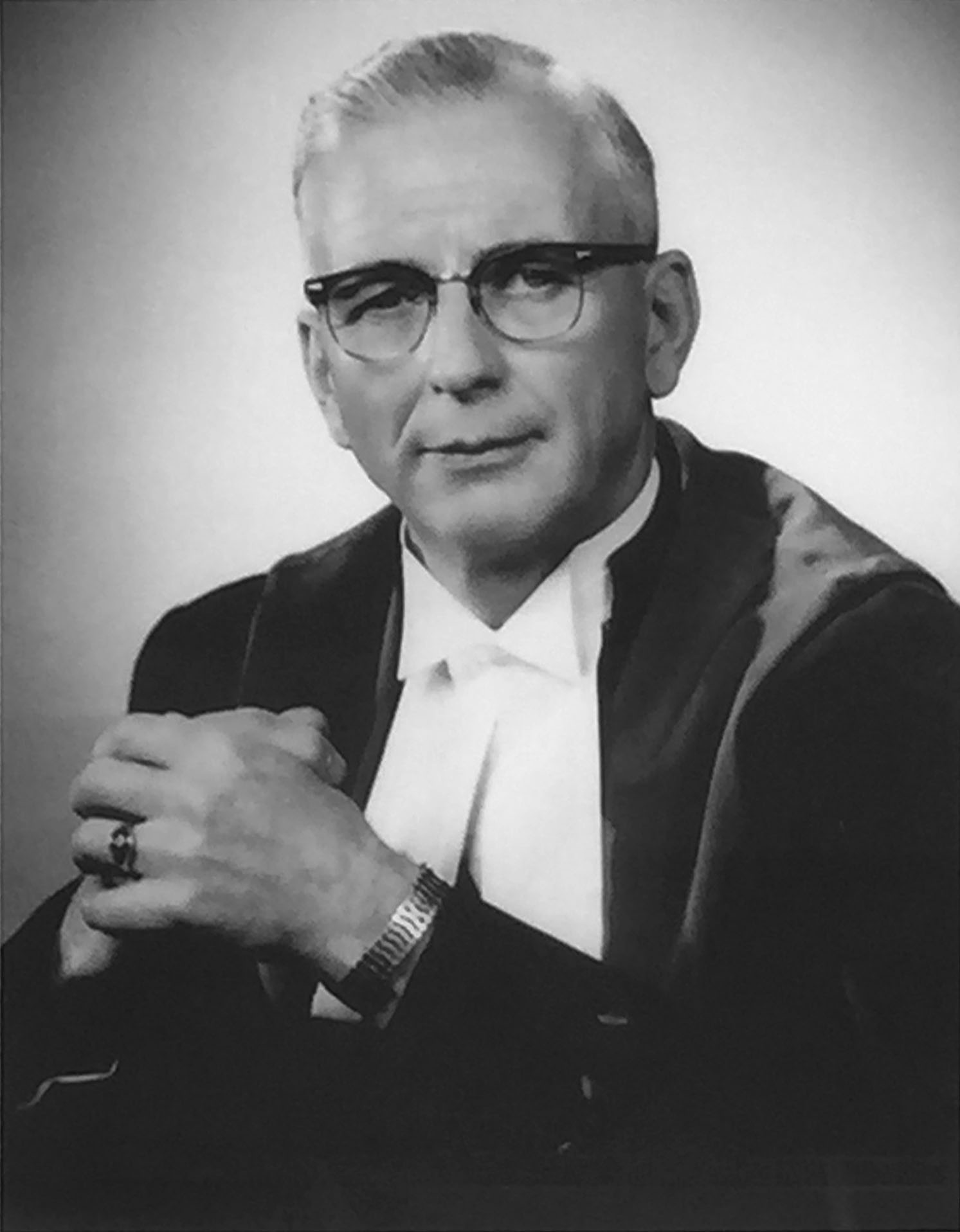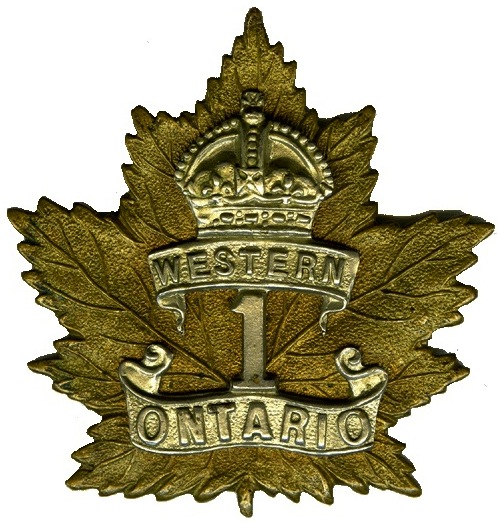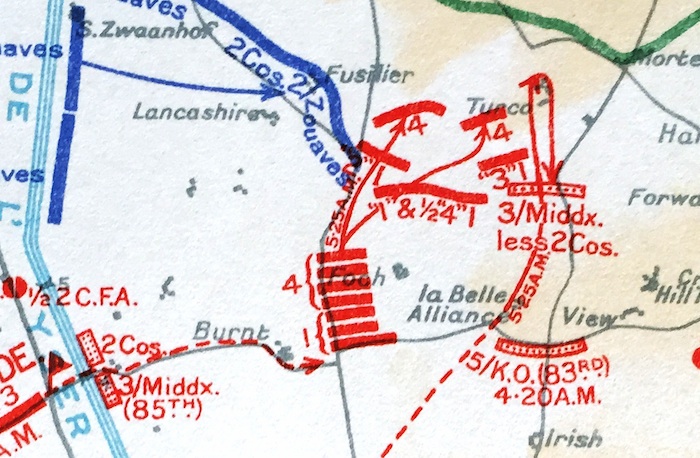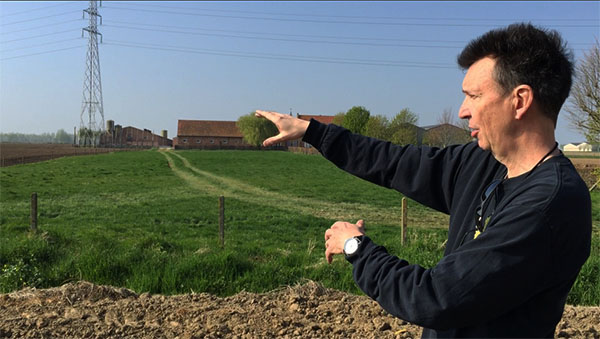The First and Last Combat of Angus MacMillan
Second Ypres — 23 April 1915
 I met Angus MacMillan in the autumn of 1983 while starting my research into a short documentary I was directing as part of a 4th year film course at the University of Windsor. There were still plenty of Great War veterans left, but some recent coverage in the local paper had mentioned that their numbers were starting to drop off at a more rapid rate — history’s clock was indeed ticking. At the time, I had no special interest in the conflict aside from the fact that both my grandfathers had served. I thought it would be interesting to speak with some old chaps (and as turned out 1 lady) who were involved in that ancient, titanic struggle of empires – many since disappeared.
I met Angus MacMillan in the autumn of 1983 while starting my research into a short documentary I was directing as part of a 4th year film course at the University of Windsor. There were still plenty of Great War veterans left, but some recent coverage in the local paper had mentioned that their numbers were starting to drop off at a more rapid rate — history’s clock was indeed ticking. At the time, I had no special interest in the conflict aside from the fact that both my grandfathers had served. I thought it would be interesting to speak with some old chaps (and as turned out 1 lady) who were involved in that ancient, titanic struggle of empires – many since disappeared.
Angus was, when I met him, a retired judge of 87 years who still came into his law office 2 or 3 times a week. “Tough but fair,” my Dad had said. It was not until Angus rose from his chair to greet me that I knew that THIS was a man with a story to tell. As he stood up — with less difficulty than you might expect given his age — I saw his right leg, ram-rod straight, swing out and push forward as he stepped up to shake my hand. My eyes darted toward the unbent limb and then met his as he looked up, smiled and said, “Mauser Ridge, April ‘15. Why don’t you sit and I’ll tell you about it.” Always do what the judge tells you.
Angus had no interest in being filmed so I had to rely on an old microcassette recorder and my own scrawl to capture the interview. He grew up on a farm near a crossroad named Turtle Lake, Ontario. At some unspecified date, his family moved to Edmonton. He was a very good student but when Angus was still in his teens he was forced to look for work. Angus was able to get his electrician’s ticket but by the winter of 1913/14 work was scarce “...almost like the Depression,” he told me.
With the outbreak of the War, it seemed the employment problem — and some financial support for his mother — was solved. A devout Presbyterian, Mrs. MacMillan — Angus never mentioned his father during the interview — knew Angus would have potential trouble enlisting at 18 years old without her permission, so she made him “...swear off women and drink because the Boer War vets all had come home drunks. She wouldn’t abide that kind of behavior from me.” Angus promised her and made his way to Quebec along with hundreds of other men from the West. He attested at Valcartier Camp — a little over six weeks after Britain declared war — aged 18 years and 6 months and 5 feet 6 and one-half inches tall. He was pronounced fit for duty on 22 September 1914 and assigned to the 9th (Edmonton) Battalion C.E.F.
 Along with the rest of the Expeditionary Force, Angus sailed safely to England and commenced their miserable stay on Salisbury Plain. It was decided the 9th Battalion would instead of traveling to France, be a reserve battalion, to be broken up to provide reinforcements and replacements to the 1st Brigade, 1st Canadian Division who were to leave for the front in February 1915. For reasons not mentioned, Angus found himself part of a draft of 17 men detailed to join the 1st (Western Ontario) Battalion at Bustard Camp on 6 February 1915. The battalion left England at Avonmouth aboard the transport ship Architect at 11:45 pm on February 8. After 3 DAYS at sea (It was only the English Channel!) they arrived at St. Nazaire, though it wasn’t until 3:28pm on the 12th (Angus’s 19th birthday — making him finally, legally, a soldier!) they boarded their train and headed, circuitously, to the front. Throughout the day and into the night the train bumped and ground its way – Nantes, L’Aigle, Rouen, Boulogne, Calais, St. Omer, Hazebrouck, then finally Strazeele on the morning of the 14th.
Along with the rest of the Expeditionary Force, Angus sailed safely to England and commenced their miserable stay on Salisbury Plain. It was decided the 9th Battalion would instead of traveling to France, be a reserve battalion, to be broken up to provide reinforcements and replacements to the 1st Brigade, 1st Canadian Division who were to leave for the front in February 1915. For reasons not mentioned, Angus found himself part of a draft of 17 men detailed to join the 1st (Western Ontario) Battalion at Bustard Camp on 6 February 1915. The battalion left England at Avonmouth aboard the transport ship Architect at 11:45 pm on February 8. After 3 DAYS at sea (It was only the English Channel!) they arrived at St. Nazaire, though it wasn’t until 3:28pm on the 12th (Angus’s 19th birthday — making him finally, legally, a soldier!) they boarded their train and headed, circuitously, to the front. Throughout the day and into the night the train bumped and ground its way – Nantes, L’Aigle, Rouen, Boulogne, Calais, St. Omer, Hazebrouck, then finally Strazeele on the morning of the 14th.
“As we came to a stop in St. Omer before midnight on the 13th, I could hear what sounded like thunder in the distance. Then I then realized it was the big guns at the front making all the racket. It was the first time I heard what war might sound like. Some birthday I thought. I never forgot THAT one!”
The 1st Battalion spent the next 7 weeks getting acclimatised in and around Armentières (or “Armenteers” as Angus called it), just south of the Belgian frontier. The battalion moved north into Belgium on April 6th and parked themselves in and around the small town of Oudezeele until moving to Proven on the 18th. They were headed to the Ypres Salient which had calmed considerably since the Fall of 1914 when the French and British lines, bulging eastward into German-held territory, had stiffened somewhat. Enemy activity (and shelling) had been on the increase of late so many thought the Boche was up to something. The battalion marched closer to Ypres itself on the 20th, arriving in the small town of Vlamertinghe (“Vlammer-tinge” in Angus-speak). On the 21st they got the word to move “at a minute’s notice”.
“We knew something big was up. Everybody had an opinion. There was a LOT of shelling and noise coming from the direction of Ypres so we thought we’d all be moving soon.”
At 2:20 AM on the 23rd of April the Battalion got word to move out at speed and make their way across the Yser canal at Breilen via a pontoon bridge to a position just south of a slight rise called Mauser Ridge. This was barely 10 hours after the first gas attack had punched a huge hole in the line North of the First Canadian Division, anchoring the eastern approaches to Ypres. The battalion was to take part in a counterattack in conjunction with the 4th Btn (Toronto) CEF in the lead, the French on their left and a ramshackle force of thrown-together Imperial units Commanded by Col. Geddes (“Geddes Force”) on their right. Artillery support would be spotty and the objective hazy, but a counterattack it would be.

The 1st & 4th Canadian Battalions cross the Yser Canal to re-assemble into attack formations on the Ypres-Pilkem Road, fanning out to the right and turning north towards Mauser Ridge on which the stronghold Turco Farm (upper right) is located. The regiments thrown together to stave the German advance included the British 3rd Middlesex to the right of the Canadians.
“It was just light and orders were to advance, that’s it — advance. We were trained to run forward a few paces and flop. The line of men behind you would do the same until to were in the enemy trench or close enough on open ground to use your bayonet. You didn’t want to fire your rifle unless you were sure of a clean shot for fear of shooting your own men in the back. Our packs and webbing were fine for marching but awful for the tactics we supposed to practice in the field. When you flopped down on your stomach, your pack would fly forward and hit you in the back of the head — with your mess tin in it, which really smarted - often times knocking your cap off.”
Depending on the account you believe, the attack occurred at 5:00 or 5:30 or 6:00 am on the 23rd. The French attack never materialised, and Canadian units went forward anyway, with only one field battery (of 18-pounders) in support.
“We climbed out and ran forward and flopped down without the enemy seeing us. Sure enough, those packs of ours hit us in the back of the head and knocked most of our hats off. We got back up after the next line passed us and ran forward and flopped again. By this time the Germans saw us and they let loose with everything they had. Men who were running past us started to fall but I still didn’t think they were shooting at me. As I reached for my cap a bullet hit the dirt beside it and for some reason I placed my hand over the hole the bullet had made — and it was hot. That’s when I realized someone was trying to kill me.

Author of article Daniel Murphy surveys Mauser Ridge and the German strongpoint Turco Farm on 23 April 2015, exactly 100 years to the day of Angus MacMillan's first and last combat.
“As we started to get up I could hear the volume of fire increase considerably. Bullets were whizzing everywhere. It was at that moment I felt somehow like I was back in Canada, back at the farm. When I was a boy Mother would call me in from the barn, for dinner. In winter, the wind blew against you on the way to the house, and when it was snowing I would tuck my chin in my rolled-up collar and run like the dickens. So as I got up to do my run-and-flop, I could hear my mother calling. I would say I took about 3 or 4 steps before I was hit. I was spun clean around and fell on my stomach. As I tried to get up I realised my right knee wouldn’t bend. I rolled on my side to have a look and saw a hole in my trousers where my knee cap SHOULD be. There was a lot of blood starting to flow and it became very painful. I did my best to crawl back to the trench — which I managed to do and just rolled in and noticed the blue morning sky just before I passed out.
I woke a day or two later in a hospital (ed: quite possibly the CCS — casualty clearing station — at Hop Store, Vlamertinghe). They had given me morphia or something for the pain and explained that I’d be heading home soon and that my war was over. When I asked about my leg they got serious and told me that because the knee cap had shattered, the joint had to be “stiffened” — I would no longer be able to bend it, which meant walking normally was a thing of the past.” Angus then rolled his pant leg up and showed me the still very visible 68-year old scar, roughly 12 inches long and 4 inches across, complete with stitch marks precisely where his kneecap would have been.
“It’s one for the books, but because of it, I’m standing here today. Of that I’m sure”. So Angus MacMillan, unlike so many others, was “saved by a bullet on Mauser Ridge” in Canada’s first battle — “The Second Battle of Ypres” — on 23 April 1915.
Daniel James Murphy
(Daniel James Murphy is a Great War history maven, currently working on Blindfold and Alone, a documentary about Canadians shot at dawn by their own forces.)
If you have any observations, comments, insights, or see any errata, typos, or anything interesting when viewing these photos, please contact us. (Refer to photo reference numbers if possible.)






